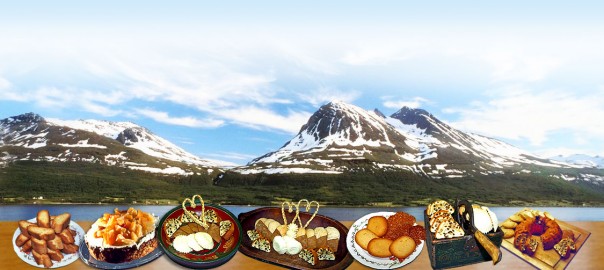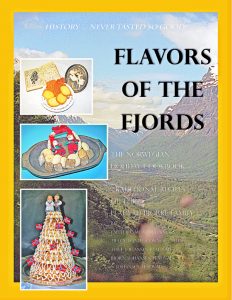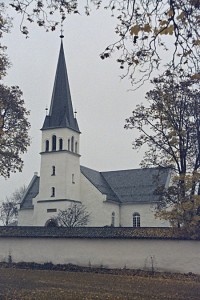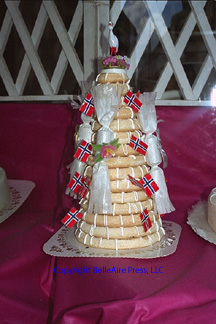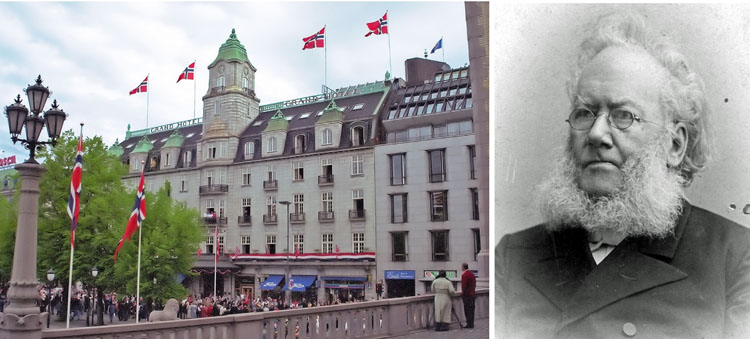
Hidden Norwegian History…
This famous Norwegian playwright is linked to this landmark hotel
Hint: Clearly, the hotel is far larger than a Doll’s House.
Are they:
- Roald Amundsen and the Baked Alaska served at Hotell Bondeheimen.
- Edvard Greig and the Peer Gynt Suite at the Hotel Continental.
- Fridtjof Nansen and the stunning views from Aker Brygge.
- ♫Henrik Ibsen and afternoon coffee in Oslo’s Grand Hotel.
At left, Grand Hotel Oslo, a landmark gathering place for many decades. At right, Henrik Ibsen, the internationally honored Norwegian playwrite and author, in 1898.
The Fladvads were proud of Ibsen and were very familiar with his work. Marie had several photographs of him, including this one which she probably acquired during her 1898 visit to see her parents in Christiania.
Flavors of the Fjords explains Marie Fladvad’s empathy with Ibsen, particularly with Nora in A Doll’s House. “Ibsen, like Wagner and Manet, has lived down his commentators,” H.L. Mencken wrote, “and is now ready to be examined and enjoyed for what he actually was, namely, a first-rate journeyman dramatist, perhaps the best that ever lived.” One of the “Ideas” Ibsen had, Mencken pointed out, was that it is “unpleasant and degrading for a wife to be treated as a mere mistress and empty-head.”
The Grand Hotel in Oslo, Norway. Ibsen was often seen in its Grand Cafe after his return to Christiania in 1891. He could be found there from precisely 1.20 pm-2 pm and 6 pm-7.30pm each day.
Occasionally, Marie and her friends would see him there when they went in for frokost. Of course, they saw his plays when they were presented at the nearby National Theater.
The Grand Hotel Cafe was the favored watering hole for a generation of Norwegian artists. Edvard Munch painted Ibsen sitting by the window with a newspaper. The Cafe closed for extensive renovations in 2015. It has reopened.
The entrance to the Storting, Norway’s Parliament, is seen at right.
Why you should savor Flavors 2018 ePub Edition…
“Flavors of the Fjords” is a combination of cookbook and family history assembled by the Fladvad and Bjørke family. The book may be the most detailed history of a Norwegian-American family yet published, and it serves as a model of what many Norwegian-American families could do to preserve knowledge of their past and the stories of their ancestors’ immigration.”
News of Norway, Norwegian Embassy, Washington, D. C.
- Flavors of the Fjords is the largest, most comprehensive history of any Norwegian-American family yet prepared, including authentic, traditional holiday recipes, travels, photographs, and correspondence, over 400 pages (depending on browser used).
- Explore and Celebrate Norway’s history, culture, and breathtaking beauty.
- Follow the Fladvad and Bjørke family through over 400 years of illustrated history and documented survival. “…the most detailed history of a Norwegian-American family yet published…”
- Family history is interwoven with fascinating images of Norwegian “must-see” locations such as Maihaugen, Slottet, Storting, Sunndal and social history, including explanations of Norwegian Holiday traditions and customs, many of them kept alive to this day by millions of Norwegian-American families.
- Share and understand the Norwegian-American Experience from Norway-to-Newport–See the other side of Newport’s Gilded Age through the history and struggles of the Cottrell family.
- Recreate the aromas of your Bestemor’s kitchen at Christmas, National Day, or other holidays, with over 100 authentic, traditional Norwegian cakes and cookies. “History has never tasted so good!”
- Recipes for over 100 holiday cookies, cakes and breads, toppings, and puddings.
- Includes a 1,800-word Norwegian-English glossary, with useful terms for foods and cooking, but also family, kinship, home, and utensils. The Glossary is the first designed specifically to help readers wishing to translate their family Norwegian recipes.
- Numerous links to authoritative external sites provide quick, convenient additional information for e-Publication readers.
- Flavors includes rare letters and photographs from family members describing the trials of life in German-occupied Norway during World War II.
- Recipes are really interesting and fun to read. The Authors have included copious notes on Norway, its people, and its cooking. In addition, many of the recipes pages include period photographs of family members who were connected with the recipe.
